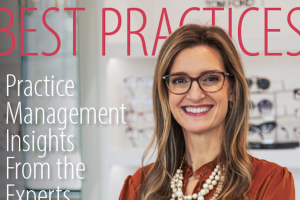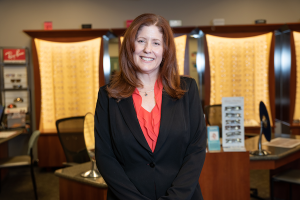
2023 CooperVision Best Practices Honoree Dr. Robert Clark shares where and when to invest time and money into a practice.
Between staffing, continuing education, and new technologies, there are many different ways to invest time and money into your practice—and determining the areas on which to focus can be difficult. 2023 Best Practices Honoree Dr. Robert Clark of South Bay Family Eye in Long Beach, Calif. shares how prioritizing the patient experience has been crucial to understanding where, when, and why to invest in different areas of his practice.
What do you view as the most profitable practice investments?
Dr. Clark: My most profitable practice investment isn’t necessarily a device as much as it is a mindset. For me, that means continuously finding ways to streamline the flow of patients and improve communications in our office. Making our practice more efficient enables us to see more patients, and when we see more patients, we’re more profitable. One such investment is the 24/7 emergency care services we provide, which we started offering after moving into our new-and-improved facility in summer 2022. Our clinicians can be reached virtually at any time of day, have cloud-based access to all our patients' records, and can request photos and other telehealth information prior to meeting the patient.
There are many different places to invest time and money into your practice. How do you prioritize where to invest?
Dr. Clark: Improving the patient experience is our end goal, so I spend quite a bit of time on staff training and education to ensure my team is knowledgeable and can address a patient’s needs to the best of their abilities. I’m committed to setting aside one-half day per week to work directly with my staff. Sometimes during these meetings, we discuss trends that we’re seeing around the office, or I’ll train them on how to use newer technologies or devices in the practice.
Why have you chosen to invest in new technology?
Dr. Clark: Technology is an important part of our practice because it serves as a training and educational tool for both patients and staff alike—in different ways. My staff is trained on how to use each and every device brought into our practice so that they’re prepared to confidently educate patients on their eye health. In turn, our optical coherence topography (OCT), corneal topographer, visual field machine, lens star, and other advanced technologies allows us to “show and tell” our patients what is going on with their vision.
In which practice management tools have you recently invested? Why?
Dr. Clark: We recently started leveraging the Weave platform, which has been a game-changer for our practice in terms of streamlining patient communication and booking appointments. Moving away from paper records to electronic medical records (EMR) has been more efficient for my staff and patients because they can both access information more quickly and easily, chat online with our staff, and book appointments online.
What types of practice investments do you recommend to young ODs or newer practices?
Dr. Clark: My biggest advice is to take advantage of the sources available online. Whether it’s ODs on Facebook, trade articles and blogs, or different mobile and online apps, there are so many resources for learning what has made others successful and profitable. From there, it’s all about trying things for yourself to learn what works best for your practice.








